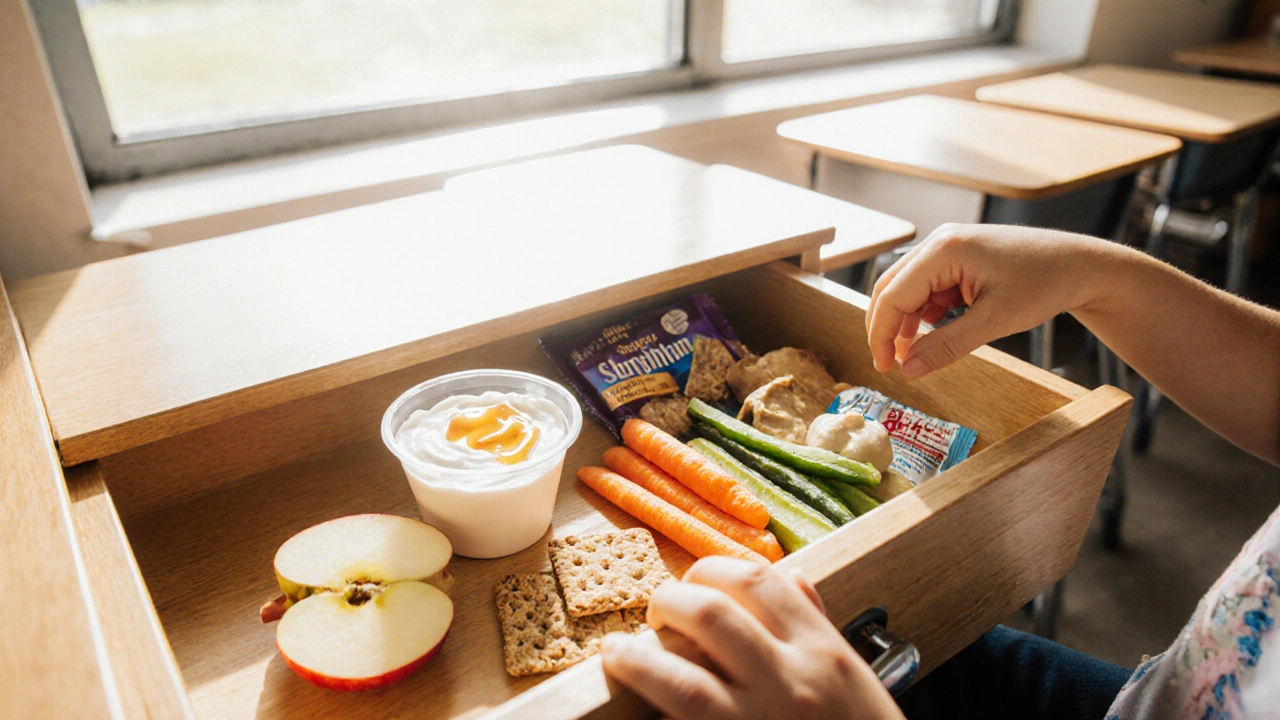Nutritious Snack Ideas for Everyday Energy
When exploring nutritious snack ideas, simple, health‑focused bites that keep blood sugar stable and provide essential nutrients. Also known as healthy snack options, they serve as quick fuel for busy days and support long‑term wellness. Nutritious snack ideas are more than just a food trend; they are a practical tool for anyone looking to stay alert, control cravings, and avoid sugary crashes.
One key subcategory is brain‑boosting snacks, food choices rich in omega‑3s, antioxidants, and protein that sharpen focus and memory. These snacks often include nuts, seeds, Greek yogurt, and berries. Because the brain uses about 20% of daily calories, a bite that supplies steady glucose and healthy fats can improve study sessions, work performance, and mood. This relationship creates the semantic triple: nutritious snack ideas encompass brain‑boosting snacks.
How a Healthy Diet Shapes Your Snack Choices
Another essential entity is healthy diet, a balanced eating pattern that emphasizes whole foods, lean proteins, and plenty of fruits and vegetables. When your overall diet follows these principles, snack selection becomes intuitive—think carrot sticks with hummus, apple slices with almond butter, or a small portion of cottage cheese topped with pineapple. The healthy diet framework requires mindful ingredient choices, linking directly to the broader concept of nutritional snacking.
Mindfulness plays a surprising role in snack decisions. The practice of mindfulness, paying non‑judgmental attention to the present moment, especially during eating helps you recognize true hunger cues versus emotional cravings. By applying mindfulness, you can pause, assess the nutritional value of a snack, and choose options that truly satisfy. This establishes the triple: mindfulness influences nutritious snack ideas. When you pair mindful eating with quick, balanced bites, you reduce stress‑related eating and keep energy stable throughout the day.
Stress reduction is another pillar that connects to snack quality. High stress often triggers cravings for sugary or salty foods, which can lead to energy spikes and crashes. By incorporating stress‑relief techniques—like a brief breathing exercise before reaching for a snack—you create a feedback loop: lower stress leads to better snack choices, and better snack choices support lower stress. In other words, stress reduction supports nutritious snack ideas. Simple habits like a five‑minute stretch or a quick walk can reset your appetite and improve decision‑making.
Practical tips make these concepts easy to apply. Start by prepping snack portions at the beginning of the week: divide nuts into small bags, wash cut veggies, and portion out hummus or guacamole. This preparation removes the guesswork when hunger hits and ensures you grab a nutrient‑dense option instead of reaching for processed foods. Remember, the goal is not perfection but consistency—choose snacks that align with your dietary goals and fit your routine.
For students and busy professionals, the speed of preparation matters. Brain‑boosting snacks like a boiled egg with a dash of paprika, a smoothie with spinach and protein powder, or a rice cake topped with avocado can be assembled in under two minutes. These options combine the benefits of protein, healthy fats, and complex carbs, offering sustained energy without a sugar crash. By linking quick preparation methods to the broader healthy diet framework, you create an ecosystem where snack time becomes a strategic part of your day.
Family-friendly snack ideas also fit into this ecosystem. Kids love portable foods like banana slices with peanut butter, mini cheese quesadillas, or fruit‑filled yogurt parfaits. When you involve children in the snack‑prep process, you teach them about balanced eating early on. This educational angle ties back to the central entity: nutritious snack ideas can be a learning tool, reinforcing healthy habits across generations.
Seasonal variations keep your snack menu fresh and exciting. In summer, think chilled cucumber sticks with lime‑yogurt dip; in winter, warm oatmeal topped with toasted nuts and a drizzle of honey. Adjusting snack ingredients to the season supports nutrient diversity—winter greens offer vitamin C, while summer berries provide antioxidants. This seasonal adaptability highlights how nutritious snack ideas can evolve while staying grounded in the same health principles.
Finally, remember that the best snack plan is the one you can stick with. Use a simple tracking method—like a bullet‑journal habit tracker or a phone reminder—to note when you choose a nutritious snack over a less healthy alternative. Over time, you’ll see patterns, discover which combos keep you most satisfied, and fine‑tune your snack strategy. This continuous improvement loop reinforces the core idea: nutritious snack ideas are a flexible, evidence‑based approach to better energy, focus, and overall well‑being.
Below you’ll find a curated collection of articles that dive deeper into stress management, mindfulness practices, brain‑boosting recipes, and more. Explore each post to get actionable steps, science‑backed tips, and quick recipes that fit right into the snack framework you’ve just learned about.
Nutritious Snacks to Boost Your Child’s Health
- Lyra Whitfield
- Oct, 20 2025
Learn how to choose, prepare, and serve nutritious snacks that boost kids' health, focus on balanced nutrients, and fit Australian dietary guidelines.
Learn More